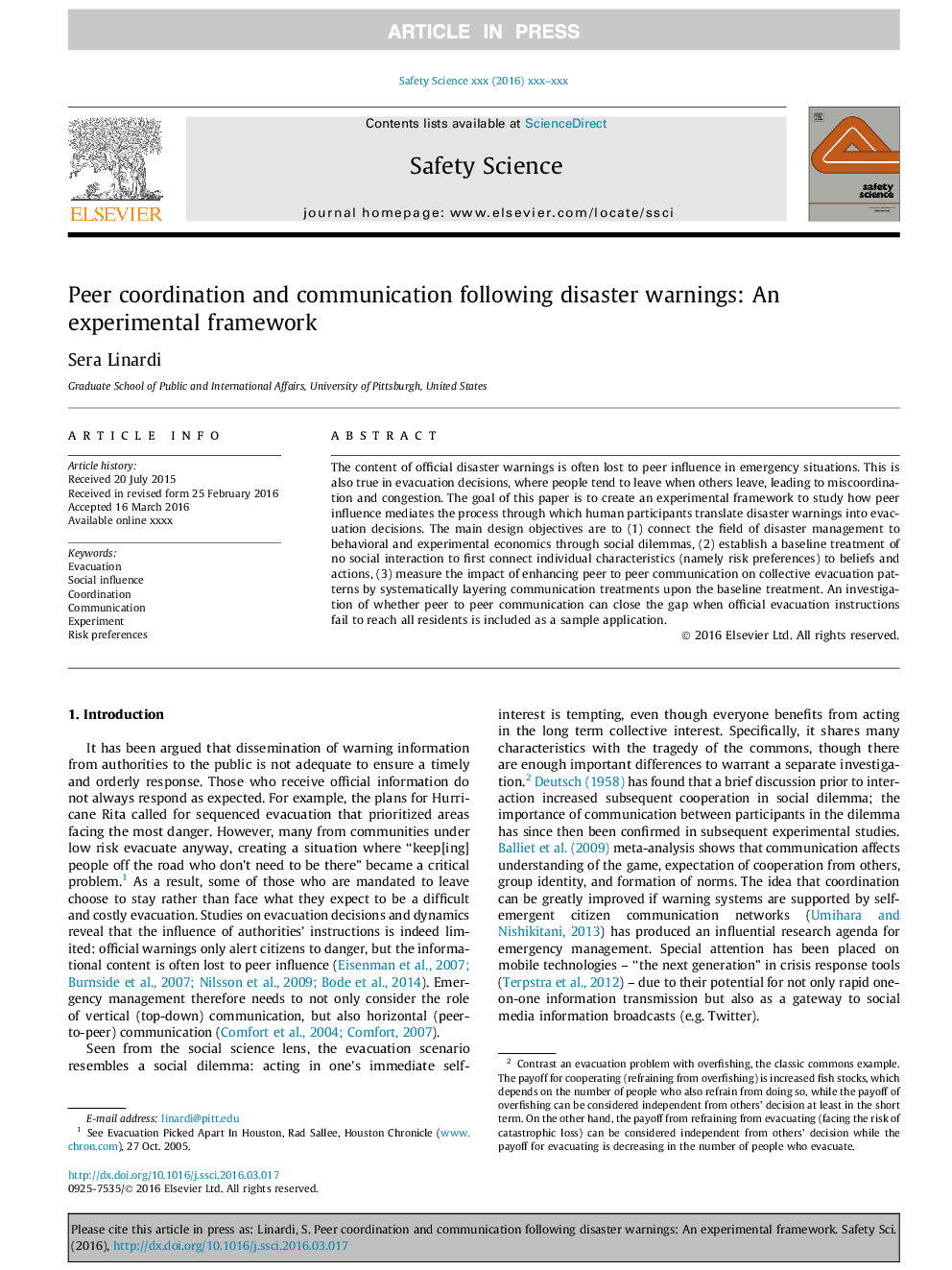| Article ID | Journal | Published Year | Pages | File Type |
|---|---|---|---|---|
| 4981343 | Safety Science | 2016 | 9 Pages |
Abstract
The content of official disaster warnings is often lost to peer influence in emergency situations. This is also true in evacuation decisions, where people tend to leave when others leave, leading to miscoordination and congestion. The goal of this paper is to create an experimental framework to study how peer influence mediates the process through which human participants translate disaster warnings into evacuation decisions. The main design objectives are to (1) connect the field of disaster management to behavioral and experimental economics through social dilemmas, (2) establish a baseline treatment of no social interaction to first connect individual characteristics (namely risk preferences) to beliefs and actions, (3) measure the impact of enhancing peer to peer communication on collective evacuation patterns by systematically layering communication treatments upon the baseline treatment. An investigation of whether peer to peer communication can close the gap when official evacuation instructions fail to reach all residents is included as a sample application.
Related Topics
Physical Sciences and Engineering
Chemical Engineering
Chemical Health and Safety
Authors
Sera Linardi,
